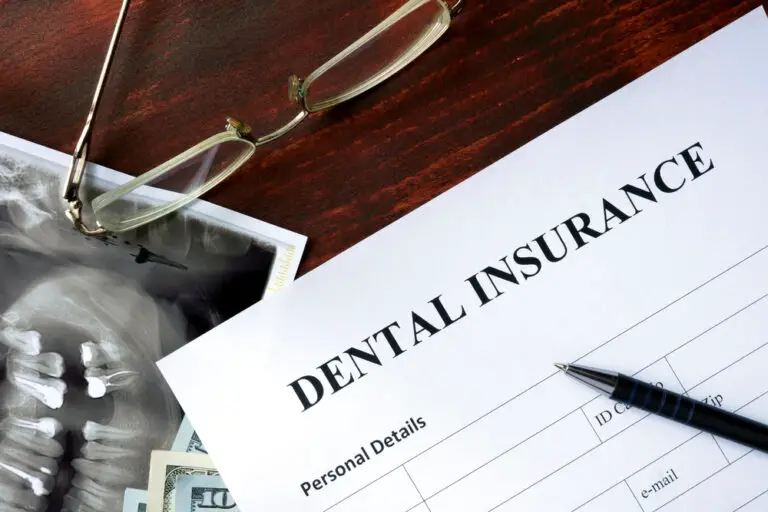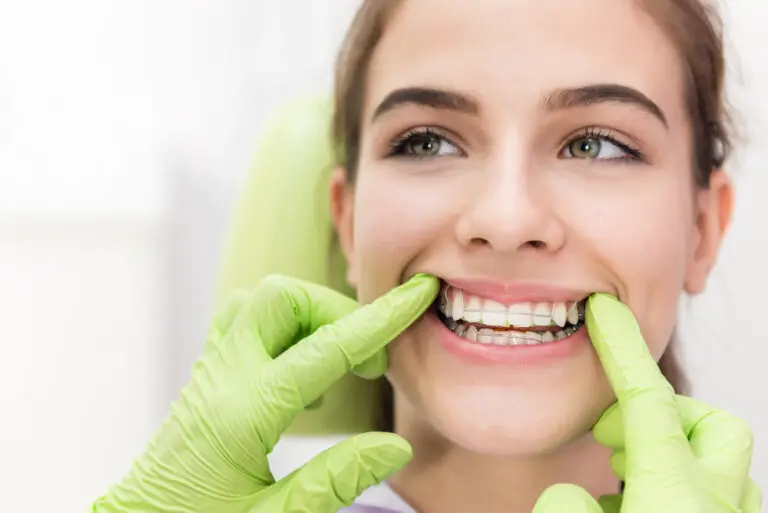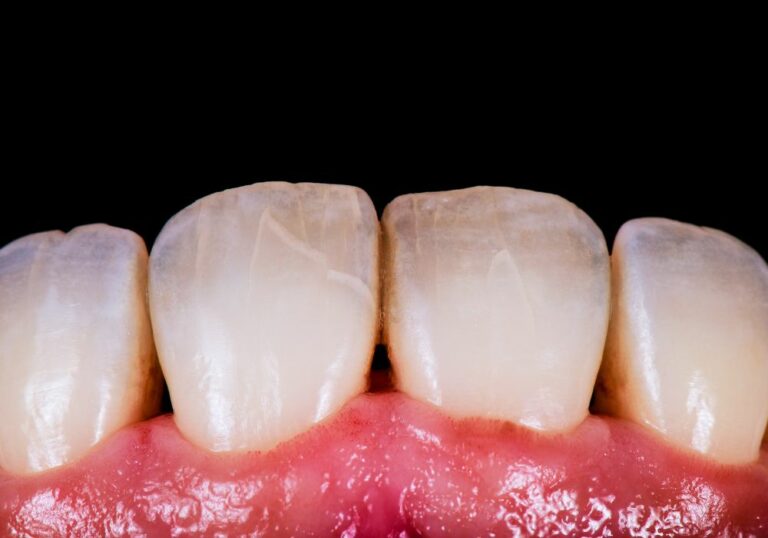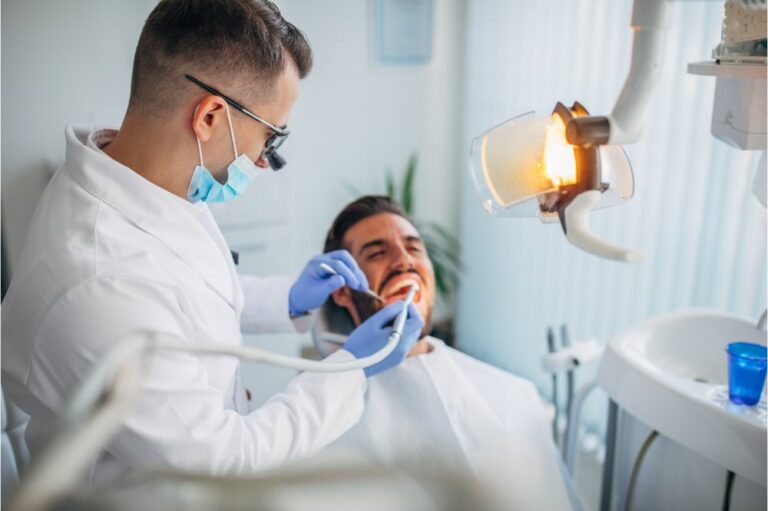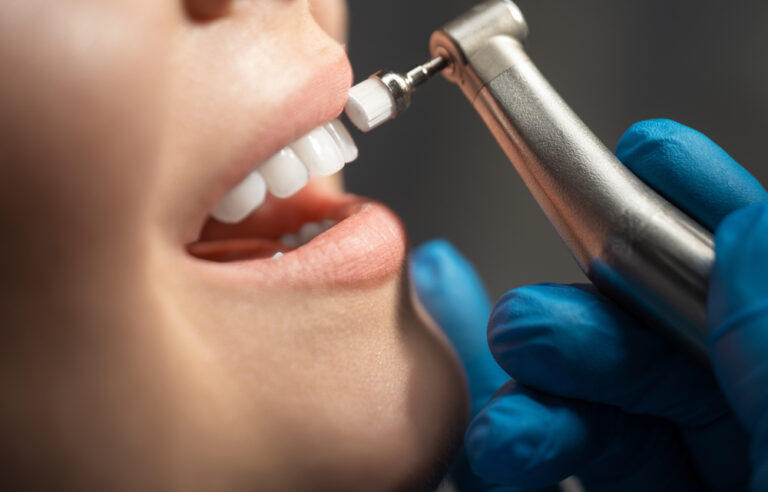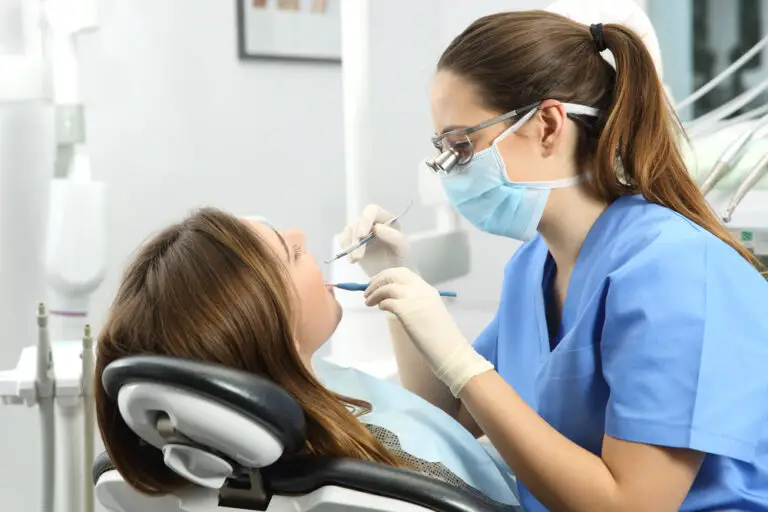Getting dental crowns is among some of the most common restorative dental procedures people get. However, many people who have crowns cemented in their teeth still get a little confused as to how to care for their new pearly whites.
One of the biggest things you can’t miss when it comes to dental crown aftercare is taking care of how (and what) you eat right after the crowns are placed in your teeth. Eating right after a crown is cemented is a big no-no as it can dislodge the crown.
Are you asking yourself, “How long after a crown is cemented can I eat?” Don’t worry. We’ve got the answers for you. We’ll even tell you exactly what food to eat and avoid until it’s safe to chew normally with your new crowns. Keep reading to learn more.
How Are Crowns Cemented on Your Teeth?
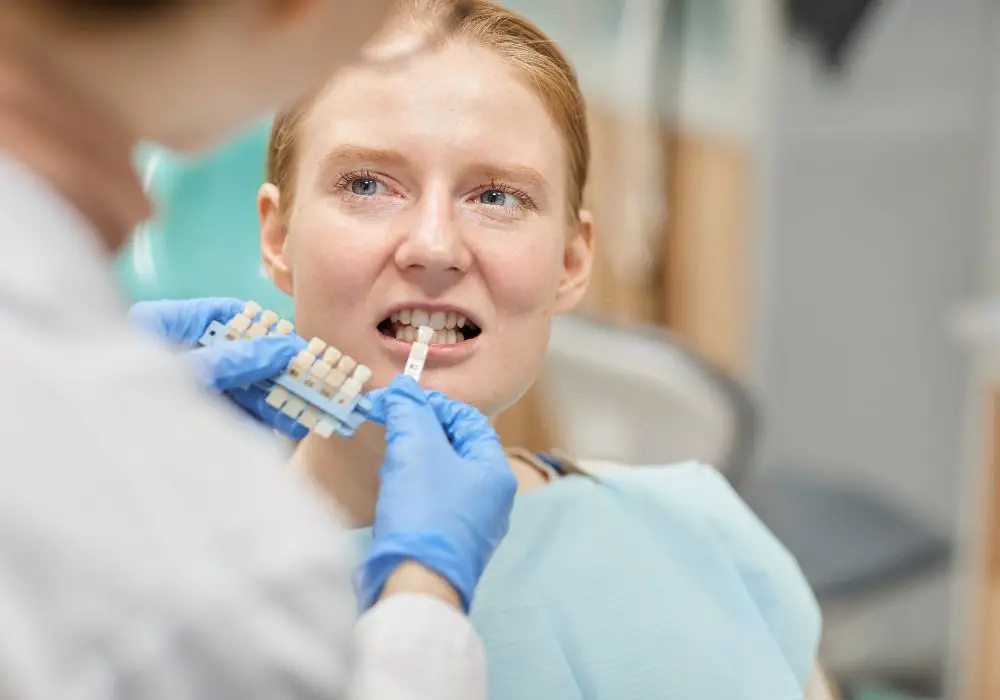
To have a better appreciation of the rules when it comes to eating after getting dental crowns, it’s important to understand how these crowns are cemented to your teeth in the first place.
It’s quite straightforward how dentists give you dental crowns. First, they’ll take impressions of the damaged teeth that need crowns. After that, they’ll create crowns that can cover them up and make them look healthy and new.
Your dentist might place a temporary dental crown first. Temporary crowns are less durable caps that are meant to stay on your tooth for just 2-3 weeks until the dentist is done custom-fitting and creating your permanent crown, which they’ll put on you after several weeks.
Then, you’ll come in to try out how your permanent crown feels on your teeth. If you’re happy with it and have a comfortable bite, your dentist will then cement the crown in place. The dental cement is put on the inner part of the crown, which is then placed on top of your damaged tooth.
How Long Should I Wait Until I Can Eat?
Just like actual cement, dental cement needs a couple of hours to a day or so to harden fully and permanently. So, it’s best not to do anything with your teeth and mouth that will dislodge or put pressure on your new dental crown until it’s completely set.
But how long are you supposed to wait until you can eat after getting your crowns?
Here’s the good news—you don’t have to wait that long before you can have a meal after getting new crowns cemented.
After 45 minutes to an hour, you can already eat soft foods. Eating any sooner than that will increase the chances of damaging the crown, which means you’ll have to come back to the dentist’s office and get it fixed.
That said, your diet (at least for the next day or so) needs to comprise soft foods and liquids only. We’ll talk more about that in a bit!
And just because we say that you can eat an hour after your procedure doesn’t mean you should chew maniacally with your new crowns.
Try to go as long as you can without biting into food with your dental crowns. The longer you wait to chew with them, the more solid the cementation between the crown and your tooth will be.
What Should I Eat After Getting a New Dental Crown?

In general, you’re only supposed to chew a minimal amount until at least 24 hours have passed since getting your crowns. Because of this, soft foods are recommended.
Your doctor will tell you what specific foods you’re allowed to eat for the first few hours after getting your crown cemented. It’s basically the same foods you would eat after getting a wisdom tooth removal. Here are some soft foods you can eat during this period:
- Soup
- Fruit smoothies
- Mashed potatoes
- Scrambled or soft-boiled eggs
- Porridge
- Soft bread and pasta
- Soft fruits like mangoes and bananas
As long as you’re disciplined enough not to chew where your crowns are, you can also incorporate proteins in your diet the day you get your dental crowns. These include soft fish, tofu, very tender chicken, and even cottage cheese.
Food to Avoid Until the Cement Hardens Completely
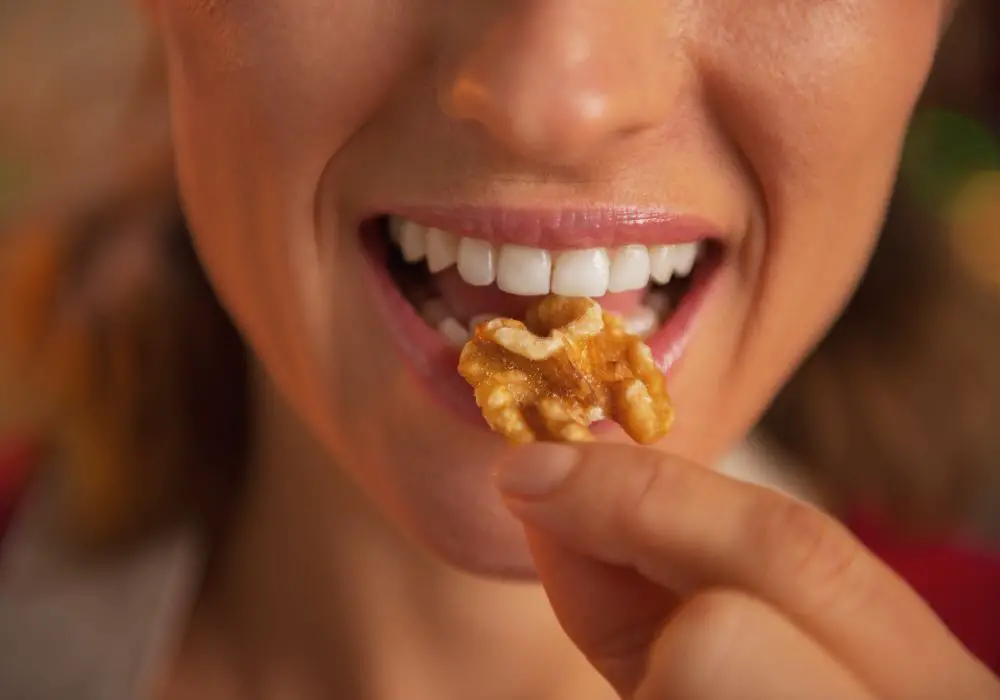
For the next day or two after getting dental crowns, there are very specific foods you should avoid. Here are the three types of food to do without until the cementation of your crowns is solid and fully set:
1. Sticky and chewy foods
If you chew sticky food, the crown might attach itself to it and get pulled out while the cement hasn’t hardened yet. So, avoid snacks like chewing gum, candy, taffy, chocolates with caramel and nougat in them, and more.
Aside from dislodging the crown from its optimal position, eating sticky foods can make your crown more difficult to clean.
The sticky bits might cling to your crown. And while it won’t pull the crown off your tooth, it may make it a hassle to wash with a toothbrush. You might even end up dislodging it with the brush while you’re trying to get the sticky food debris out.
2. Hard foods
Hard foods like nuts, toasted bread, hard candy, raw or crunchy vegetables like uncooked carrots and celery, and the kernels in popcorn might end up fracturing or chipping off your new dental crown.
Eating hard foods can also disrupt the hardening process of the cement underneath your crown. As a result, you may end up dislodging it from your tooth, especially if you bite on the food directly with the tooth with a crown on top.
3. Food and drink at extremely hot or cold temperatures
While the dental cement under your crown is still solidifying, it’s best not to eat or drink anything with extremely hot or cold temperatures.
The materials used to make the cement (and the crown) might expand or contract depending on the severe temperature they’re exposed to. This disrupts the hardening of the cement, slowing it down. So, it’s best to wait it out a few days before consuming hot and cold food and beverages.
Instead, go for room-temperature foods. Avoid chewing ice cubes or gulping down scalding hot coffee—one of the worst things you can ingest while you have sensitive teeth.
What to Do If You’ve Dislodged Your New Crowns
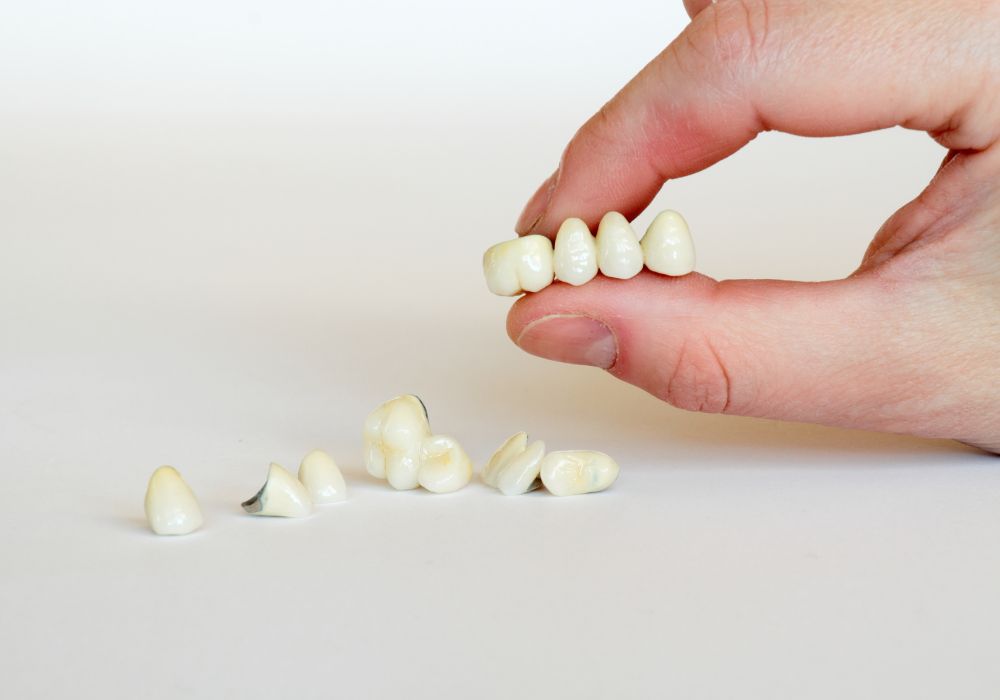
If you accidentally dislodge the crown from your tooth from eating a snack, don’t panic. This happens to dental patients all the time, and your dentist will know exactly what to do to fix it. So, your first step is to call your dentist up and tell them about the situation.
Set an appointment with your dentist so that they can properly cement the crown back on your tooth. Until then, you will need to try and reinsert the crown on your tooth.
Make sure to clean the crown properly with a gentle toothbrush and some toothpaste. Then, once it’s dry, put a little dental adhesive on it and carefully place it on top of the tooth it was originally covering. This is a good temporary fix until you can meet with your dentist again.
Need to put a dislodged crown back in place and can’t reach your dentist? Don’t panic! Here’s a video showing you how to reposition the crown on your tooth, step by step:
Other Dental Crown Aftercare Tips
1. Practice good oral hygiene
Care for your new crowns the way you would for your natural teeth. Make sure to gently brush two or three times a day and floss to get rid of food debris and plaque stuck near the gumline.
2. Don’t grind your teeth or bite your nails
Throw your bad oral care habits out the window, at least until the dental cement bonding your crown to your tooth sets properly. That means no grinding your teeth in your sleep or biting your nails. Like hard foods, the pressure from these habits can dislodge your new crowns.
3. Stay up to date with your dentist on check-ups
And finally, make sure to go back to your dentist for check-ups after your crown has fully hardened. If you were given a temporary crown, make sure to come back and get a permanent one to replace it after a few weeks.
And if you notice any discomfort with your crown, call your dentist up to set an appointment so they can see what’s wrong.
Conclusion
The success of cementing your new dental crowns doesn’t just fall on your dentist. It also has to do with how you care for your crowns afterward. One of the best ways to ensure that your crowns are cemented properly is to avoid eating right away after they’re installed.
You don’t have to wait too long. Just make sure you wait at least an hour before eating soft foods and keep at it for the next 24 hours. During that time, avoid sticky, hard, and extremely hot and cold food.
After the first 24-36 hours, consider yourself free! You can eat whatever you want, whenever you want it. Just try not to chew directly on your new dental crowns for as long as possible. That way, you’ll do your part in making sure they’re solidly anchored onto your teeth.

